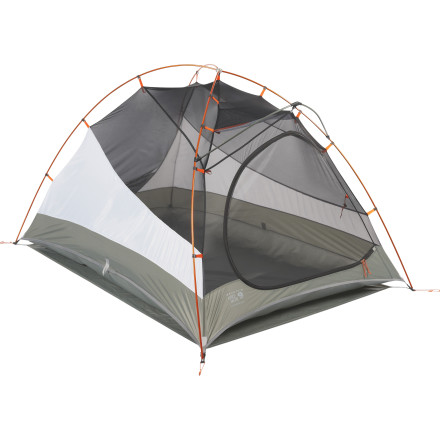When you are looking for a backpacking tent there are many different variables to consider prior to making a purchase but it is important to understand tent basics, first.
Some of the things to consider when looking for a backpacking tent are price, material, season rating, capacity, space, and weight. Other factors include ease of setting up the tent and design features such as the number of poles, rain fly storage space, and the number of entrances.
Tent Camping Basics
How to Choose the Best Tent for Camping? Need to go through Tent Basics to pick right tent for your upcoming outdoor trip.
When looking at different tents there are several aspects that you can use to start to narrow down your search. These are:
- Sleeping Capacity
- Season Rating
- Material
- Space
- Weight

Sleeping Capacity
The 1st aspects is pretty straight forward. How many people does the tent need to be able to accommodate. Keep in mind that most tents are designed to be weight efficient and therefore are more cozy. The 2nd is equally important. The season rating of a tent is an indication of how durable the material and design of the tent is. The tent season rating is broken down by the number of seasons, 4. Therefore it is common to see tents rated in the following fashion.
2 Person | 3 Person | 4 Person | 6 Person | 8 Person | 9 Person | 12 Person | 14 Person | 20 Person
Tent Season Rating
The tent season rating gives an indication of the durability and design of the tent from the manufacture. The higher the rating, the stronger the tent, theoretically. It is uncommon to see a tent with a 1 season rating but 2-4 season tents are much more common. When determining what season rating is best for you, you need to ask yourself, “Where am I planning to go backpacking?” In the mountains? The desert? A rainforest? This is important because you want to have a tent that is suitable for the weather conditions that you may encounter, or are unlikely to encounter. For example, you want to make sure your tent is rain proof/resistant if you plan on backpacking in the rainforest.
Alternatively, if you are backpacking in the desert you want a tent that has good ventilation and will keep you cool. If you plan on backpacking in the the mountains and the dessert, than it would be better to have a 3-4 season tent rather than a 2-3 season tent.
- 1 Season Tent
- 2 Season Tent
- 3 Season Tent
- 4 Season Tent
Related: Best family tents for bad weather
Material:
The material of the tent is often gong to correlate with the season rating. Tents that have a higher season rating are most likely going to use better material. The material is often better because it may be more water resistant such as gore-tex. While other tents may be made out of a nylon material with a “water proof” or “water resistant” coating. Tents that are made with nylon are water resistant initially but the water resistance begins to deteriorate after prolonged use but they are often cheaper.
Related: Best Waterproof Tents | Coleman Waterproof Tents
Space:
The amount of space that a tent has is an another important aspect to consider not only to ensure there is enough space for the amount of people that will be sharing the tent but also so that there is enough internal and external storage space. After a long day of backpacking, it is nice to be able to organize your belongings inside the tent, hang clothes to dry, and it helps if there is enough space to do that. Additionally, it is important to consider the space outside the tent that is covered by the rain cover also known as the vestibule. It is really nice when you have a large enough vestibule so that you can store your backpack and boots out of the elements.
Related: Large multi room tents – 2020
Weight:
Weight is a very important variable when selecting your tent, especially for backpacking. The less weight you have to carry, the more efficient and faster you become. Backpacking is not a race but having less weight to carry is always nice. The problem is that you have to balance the above variables; sleeping capacity, season rating, material, and space. Because, once you increase the sleeping capacity, season rating, material and/or space, the weight usually increases. So, it is important to find a good balance.
Related: Ultralight tents for Hiking and Trekking

Tent Setup and Types
How to setup a Tent?
All of the tents come with a guide for setting up the tent. Most of the times, you would not require the guide after the first time. Generally, the time to setup the tent ranges from 10-30 minutes depending on the type of the tent. All the tents with setup time around 15 minutes are a good choice.
Honestly, who wants to waste an hour of their camping day on just getting the tent up. But these are large tents and you might think that the assembly is complicated. But this is not so, it is far easier.
What are 4 types of tents?
Well, to be honest there are a lot of types of tents available for home use so we will make it easier for you and discuss the four main and most famous types of camping tents 4 common types of tents are Dome, Instant, Cabin and Canopy.
What should I look for when buying a tent?
Get ready for some passionate advice and stories that will blow your mind. Yes, literally.
We’re BananaReview.com, writing about how we can all enjoy those great, outdoor adventures with the right equipment and instincts.
